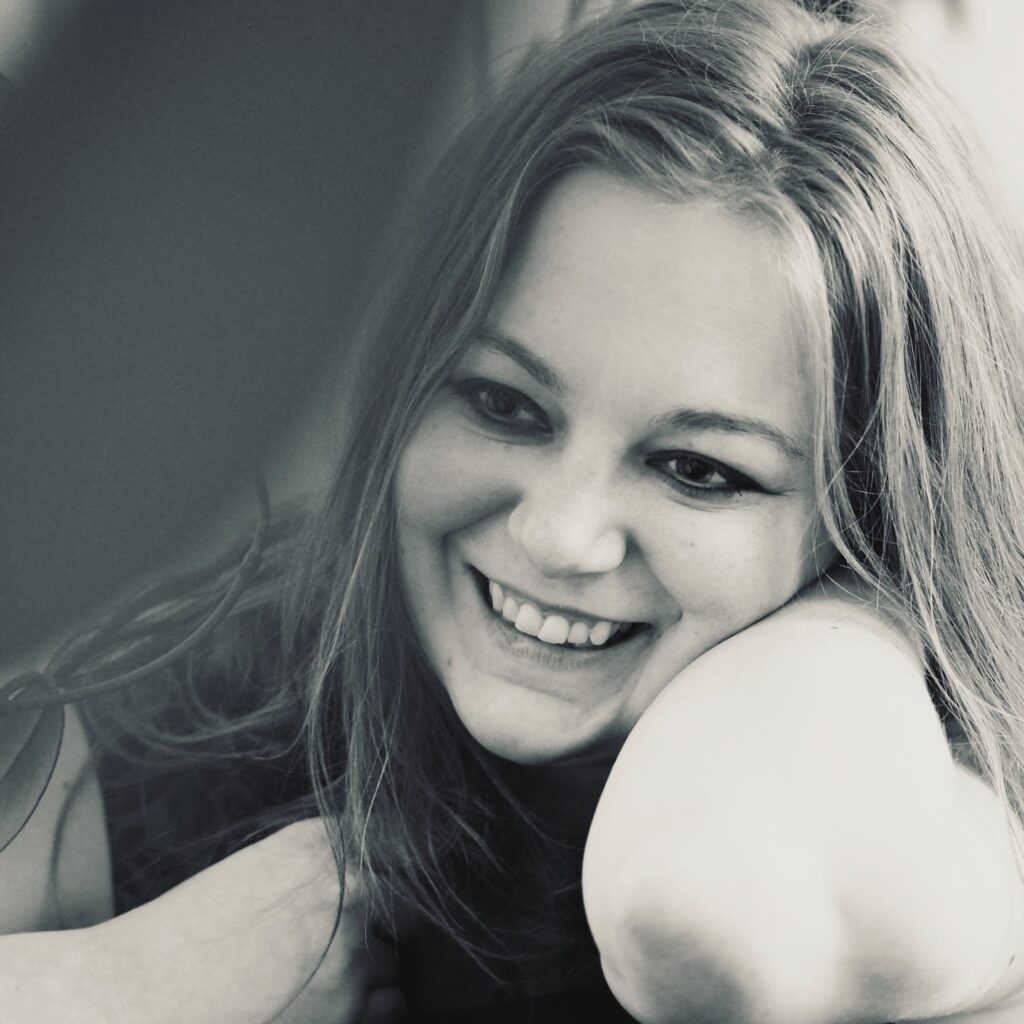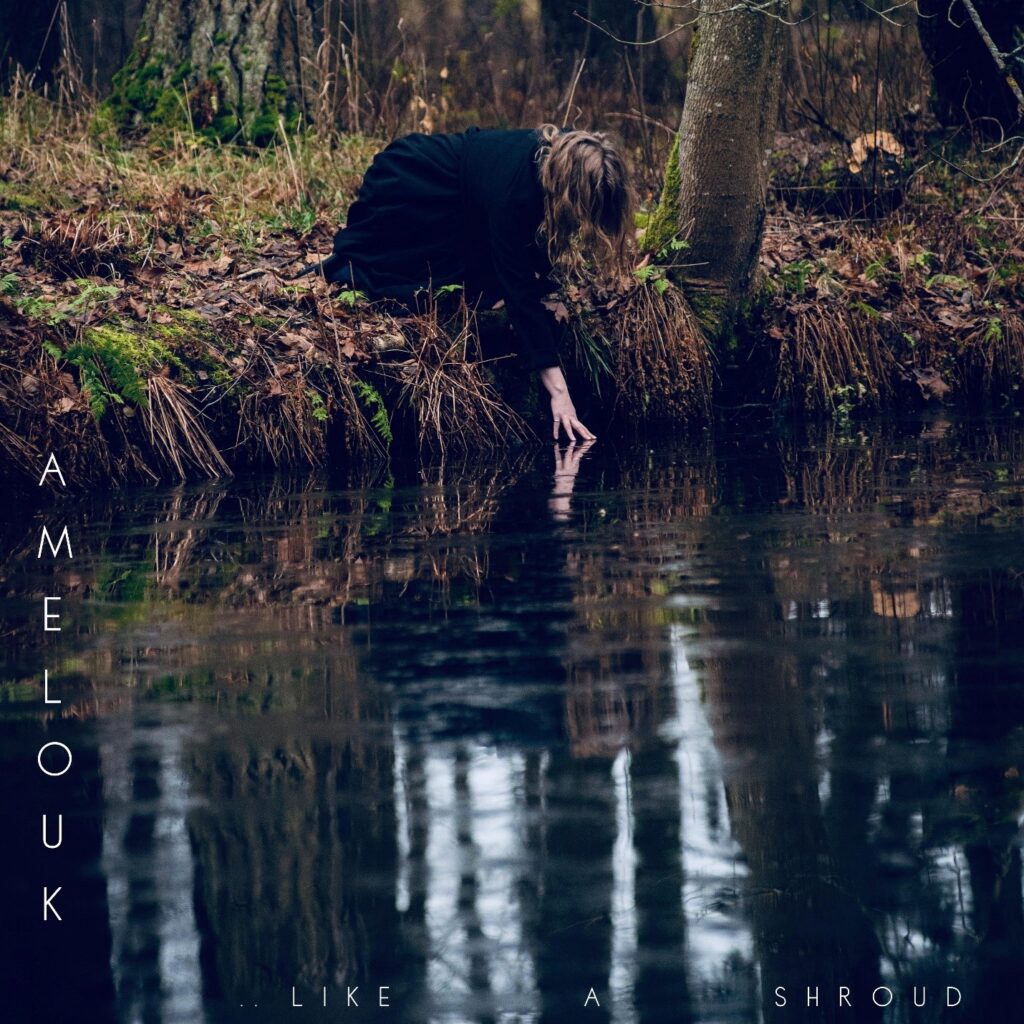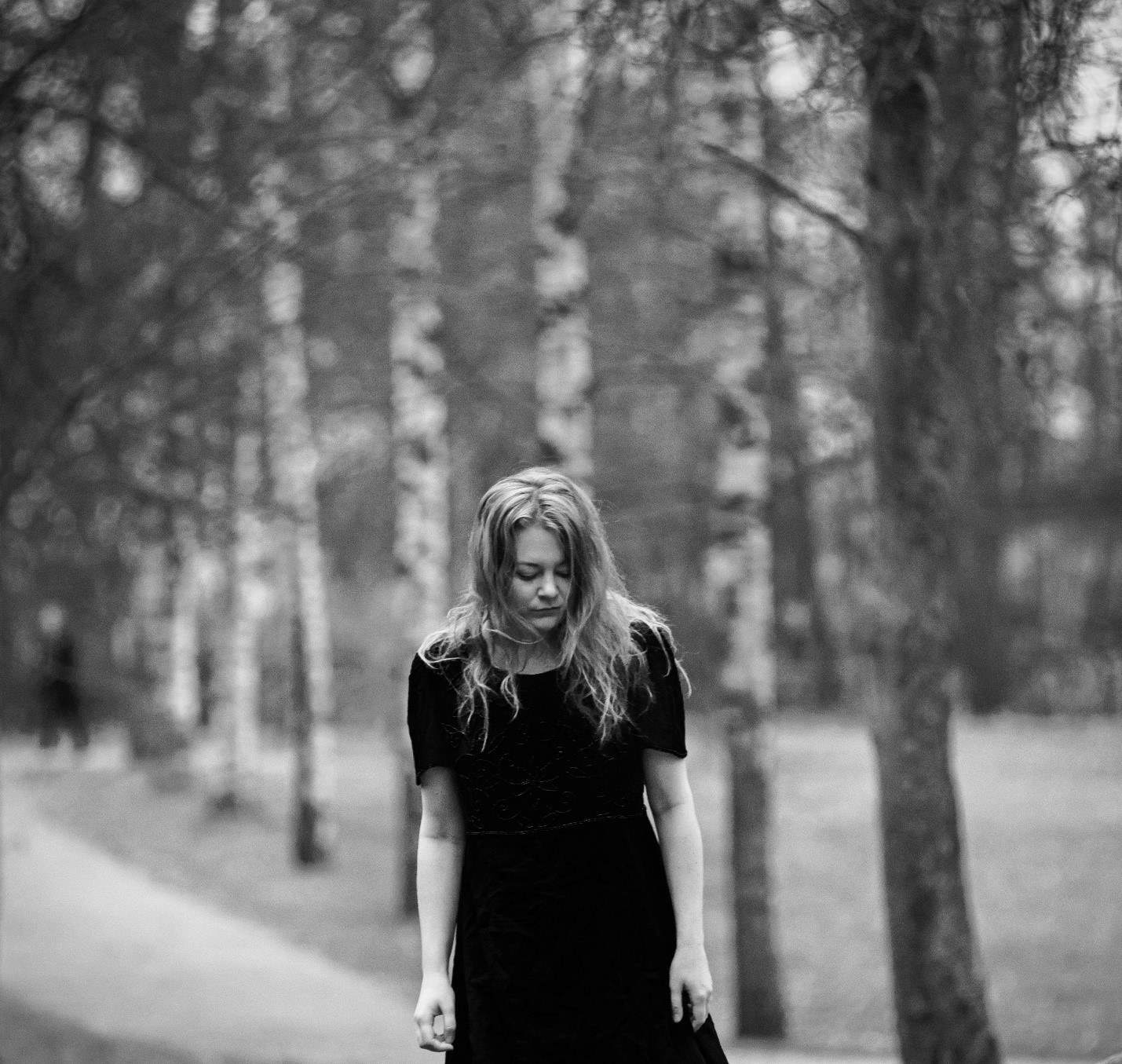Amelouk’s music is ethereal, melancholy, and seductive; it emanates from the mystical depths. Its name is a backwards reading of the Finnish word for death, kuolema. The brainchild of Olga Vähä-Piikkiö, a scientist turned musician, Amelouk is a one-woman-band. Although its origins date back more than a decade, its first formal releases were in 2022. Amelouk utilizes a variety of instrumentation, ranging from acoustic piano to electronic, while maintaining a familiar feel and complexity.
The EP “..Like a Shroud” explores the subconscious, focusing on visions, nightmares, and haunting mental regions. It is a compilation of old and new music over the past seven years. It was recorded in the spring of 2022 in Studio Oodi and Harjun Studio in Helsinki, Finland, and represents Amelouk’s return to his acoustic roots. The used instruments include the piano, voice, and lyre. Check out the EP and the exclusive interview below:

1. Can you tell us a bit about where you come from and how it all got started?
AMELOUK: I’m from Helsinki, Finland. About 15 years ago I started to experiment with melodies on the piano. Since then I have made a lot of music, but until this year it has mostly stayed in the drawer and in my head. A year ago I started to experiment with electronic music, and in the spring 2022 I released three electronic songs. My latest release “..Like a Shroud” is an acoustic EP that consists of old and new piano/voice songs, and now I’m working on the next acoustic EP to be released next spring, with a very similar concept.
2. Did you have any formal training or are you self-taught?
AMELOUK: I had piano lessons as a child, and as an adult I’ve taken classical singing lessons. I’ve also studied music theory, but otherwise in terms of composing I’m self-taught.
3. Who were your first and strongest musical influences and why the name ‘AMELOUK’?
AMELOUK: Amelouk is kuolema read backwards, and that is death in Finnish. I wanted to have another name for my music, other than my own. I don’t refer to myself as Amelouk, rather, it’s the name of the music project, kind of like a band name. I like how it sounds, and death is present in my music, and I think about it a lot.
4. What do you feel are the key elements in your music that should resonate with listeners, and how would you personally describe your sound?
AMELOUK: Whenever my music resonates with people, I hear it draws them into its own world. I think it’s quite unique and I always try to keep it true to itself. The sound is.. I’d say dark and strange.. or moody and experimental, and goes from ethereal to intense. I think those are some of the main axes.

5. For most artists, originality is first preceded by a phase of learning and, often, emulating others. What was this like for you? How would you describe your own development as an artist and music maker, and the transition towards your own style?
AMELOUK:
As a teenager I listened to a lot of metal. When I started to make my own music, I wanted to make something dark and twisted-sounding using what I knew, the piano. I was very shy, so starting a band wasn’t really an option. All my music background and theory was in classical music, I didn’t really know about any pop music chord progression shortcuts or things like that. I just listened to the notes and decided what sounded cool to me. That’s what I’ve been doing ever since, except at some point I decided that I don’t have to limit myself to always sounding so dark. Later I studied more music theory, and I’m sure I’ve internalised a lot, but I still mostly try to listen to the sounds and not analyse what I’m doing too much.
6. What’s your view on the role and function of music as political, cultural, spiritual, and/or social vehicles – and do you try and affront any of these themes in your work, or are you purely interested in music as an expression of technical artistry, personal narrative, and entertainment?
AMELOUK:
I treat my own music as self expression, which is of huge importance for me. It is as close as I get to spirituality.
7. Do you feel that your music is giving you back just as much fulfillment as the amount of work you are putting into it or are you expecting something more, or different in the future?
AMELOUK:
Music is the main thing in my life. As long as I’m in it I feel fulfilled, when I’m not, I mostly don’t. I’m in the process of getting my music out into the world, which is exciting and terrifying.
8. Could you describe your creative processes? How do usually start, and go about shaping ideas into a completed song? Do you usually start with a tune, a beat, or a narrative in your head? And do you collaborate with others in this process?
AMELOUK:
Sometimes a tune comes first, sometimes it’s lyrics. Often it’s a matter of combining existing lyrics with some musical element. Often I have some sort of an atmosphere or vision in mind and I try to find the proper notes and words for it. I don’t let anyone hear my music when I’m working on it.
9. Creative work in a studio or home environment, or interaction with a live audience? Which of these two options excites you most, and why?
AMELOUK:
I’m currently getting my acoustic songs ready for live performance. I have a 45 minute set that I will perform in January for the first time. I feel it is a continuation of finally starting to get my music out there. All of this is scary of course, but I feel like I need to expand. So, what I’m trying to say is that I don’t have that much experience of interacting with a live audience, but I’m looking forward to it and dreading it at the same time.
10. Do you think is it important for fans of your music to understand the real story and message driving each of your songs, or do you think everyone should be free to interpret your songs in their own personal way?
AMELOUK: Everyone can interpret my songs in their way. Some of my songs are about something very specific for me, and some are more abstract. But even the clearer ones leave space for interpretation, even for me sometimes. I don’t want to confine the songs in explanation, they are what they are.
KEEP IN TOUCH:
FACEBOOK | INSTAGRAM | SPOTIFY | YOUTUBE

Photo credits: Mikael Kuusisto
